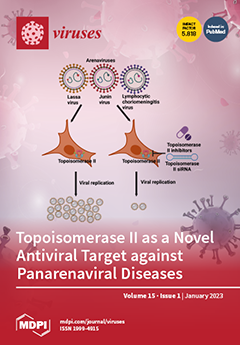The emergence of the Coronavirus Disease 2019 (COVID-19) pandemic caused by severe acute respiratory syndrome coronavirus-2 (SARS-CoV-2) has led to over 6 million deaths. The 3C-like protease (3CL
pro) enzyme of the SARS-CoV-2 virus is an attractive druggable target for exploring therapeutic
[...] Read more.
The emergence of the Coronavirus Disease 2019 (COVID-19) pandemic caused by severe acute respiratory syndrome coronavirus-2 (SARS-CoV-2) has led to over 6 million deaths. The 3C-like protease (3CL
pro) enzyme of the SARS-CoV-2 virus is an attractive druggable target for exploring therapeutic drug candidates to combat COVID-19 due to its key function in viral replication. Marine natural products (MNPs) have attracted considerable attention as alternative sources of antiviral drug candidates. In looking for potential 3CL
pro inhibitors, the MNP database (>14,000 molecules) was virtually screened against 3CL
pro with the assistance of molecular docking computations. The performance of AutoDock and OEDocking software in anticipating the ligand-3CL
pro binding mode was first validated according to the available experimental data. Based on the docking scores, the most potent MNPs were further subjected to molecular dynamics (MD) simulations, and the binding affinities of those molecules were computed using the MM-GBSA approach. According to MM-GBSA//200 ns MD simulations, chetomin (UMHMNP1403367) exhibited a higher binding affinity against 3CL
pro than XF7, with Δ
Gbinding values of −55.5 and −43.7 kcal/mol, respectively. The steadiness and tightness of chetomin with 3CL
pro were evaluated, revealing the high stabilization of chetomin (UMHMNP1403367) inside the binding pocket of 3CL
pro throughout 200 ns MD simulations. The physicochemical and pharmacokinetic features of chetomin were also predicted, and the oral bioavailability of chetomin was demonstrated. Furthermore, the potentiality of chetomin analogues –namely, chetomin A-D– as 3CL
pro inhibitors was investigated. These results warrant further
in vivo and
in vitro assays of chetomin (UMHMNP1403367) as a promising anti-COVID-19 drug candidate.
Full article






